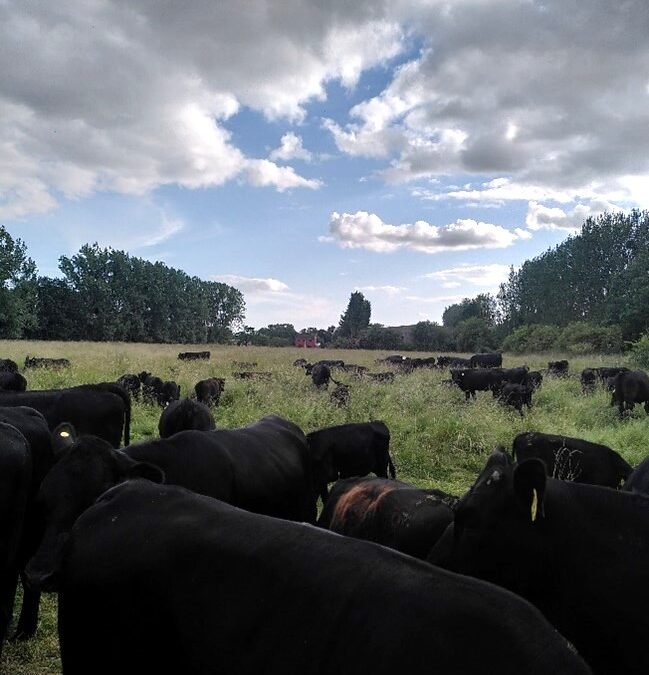Mob Grazing Kit Loan Scheme
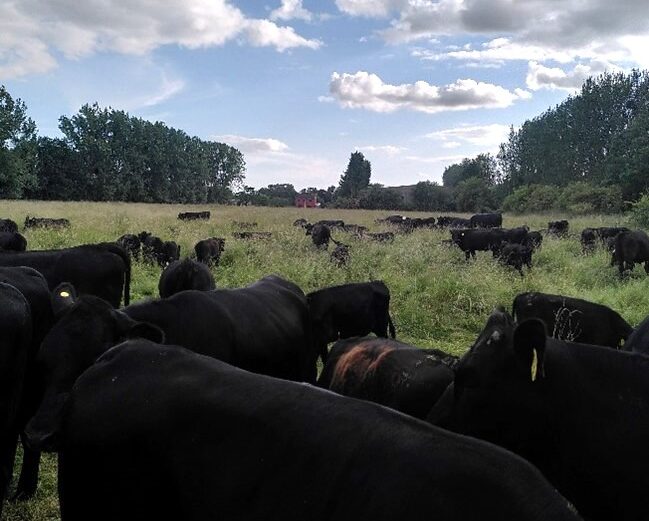
Introduction
Mob grazing is a regenerative grazing technique used by livestock farmers. Instead of conventionally set stocking a field, where livestock are given a large area to graze for an extended time (often for many weeks or months), the mob (herd or flock) is given a relatively small area to graze for only a short period of time with long rest intervals. This is a grazing technique that mimics natural grazing behaviour of wild herds that would be frequently moved on by apex predators. It supports higher levels of biodiversity, boosts productivity and is often more profitable.
The fundamentals of mob grazing
Long rest intervals between short grazing periods allows the pasture to fully recover, ensuring no pasture is overgrazed. When grazed, each field can be divided into smaller paddocks using for example, temporary electric fence. Typically, livestock are given a new paddock every 12 hours to every four days (grazing for longer than four days will start to inhibit regrowth). Rest intervals can be anywhere from around 21 days to 120 days, depending on the season. In this way, mob grazing mimics the natural grazing behaviour of wild herds of large herbivores.
Figure 1: An example of what mob grazing can look like. Left: Grazing pass of 120 head of cattle (Aberdeen Angus X Holstein stores), given approximately 3.5 hectares for several days at the end of June – notice the grass as tall as the cattle! Right: Same paddock, 29 days later, regrowing evenly from an even pasture utilisation.
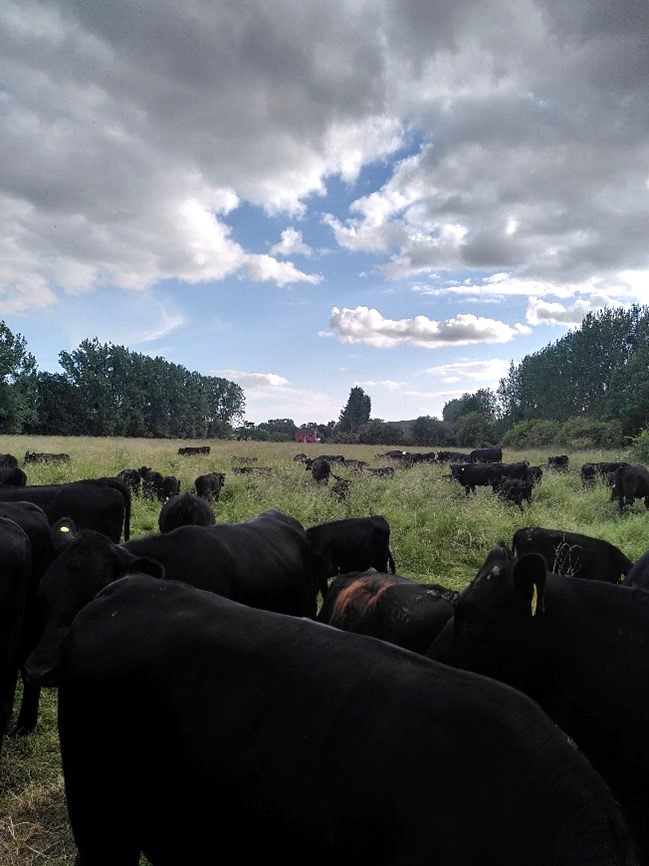
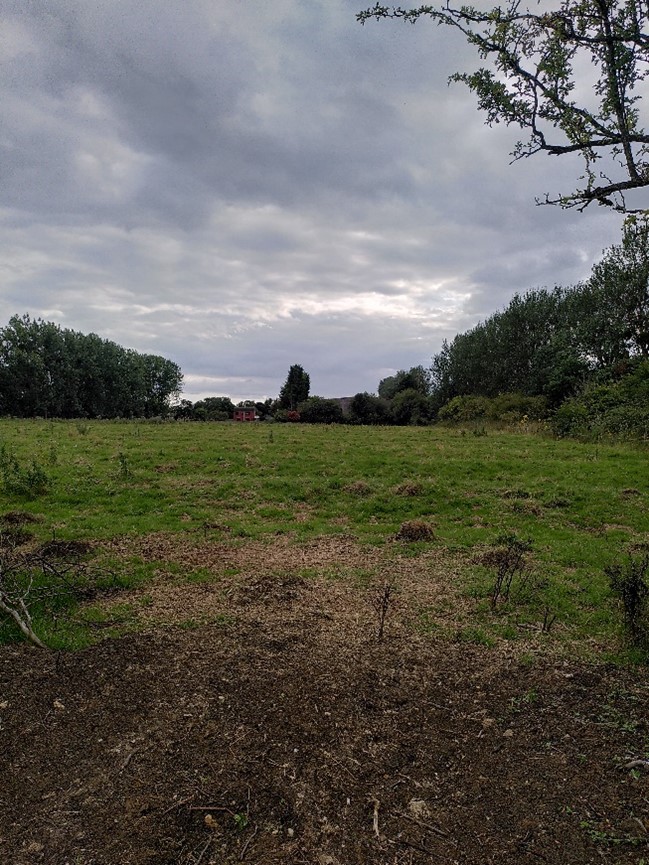
What are some of the benefits of mob grazing?
Mob grazing can provide many benefits to both the farmer and their livestock. Sufficient recovery periods between grazing rotations supports the growth of significantly more forage, providing more feed for livestock. More uniform grazing and trampling results in better pasture utilisation and ‘weed’ control. Rotations onto clean pasture helps to reduce foot infections and lameness, while grazing taller grass helps to reduce worm burdens. Increased plant health and biodiversity results in healthier livestock, as well as improving habitat quality which supporting increased biodiversity both above and below ground. A healthy soil structure and complex functioning soil biology leads to greater drought and flood resilience, as well as carbon and nitrogen sequestration.
The Mob Grazing Kit Loan Scheme
To effectively mob graze a field, unless your mob is sufficiently large, a field will need to be divided up into smaller paddocks. With the optimal paddock size varying throughout the year, due to the seasons and numbers of stock, fields can be divided up into smaller paddocks using temporary electric fence. Sometimes a field might just need to be divided in half, or it may need to be divided up into a series of smaller paddocks. Having the right kit to make the operation easy and efficient is essential. Following the success of our BioBox Loan Scheme, we have created a Mob Grazing Kit Loan Scheme, to enable land managers to trial the effectiveness of this technique on their own land before purchasing the equipment.
Each kit contains all of the equipment needed to mob graze most fields, including electric fence, geared reels, batteries, an energiser and guidance on how to implement this technique. We are trialling the scheme with some of our members this summer, and we are really excited to help monitor the benefits for agriculture and biodiversity, and encourage more of our network to try a more regenerative form of grazing.
If you are interested in a Mob Grazing Kit, then please get in touch: info@wealdtowaves.co.uk
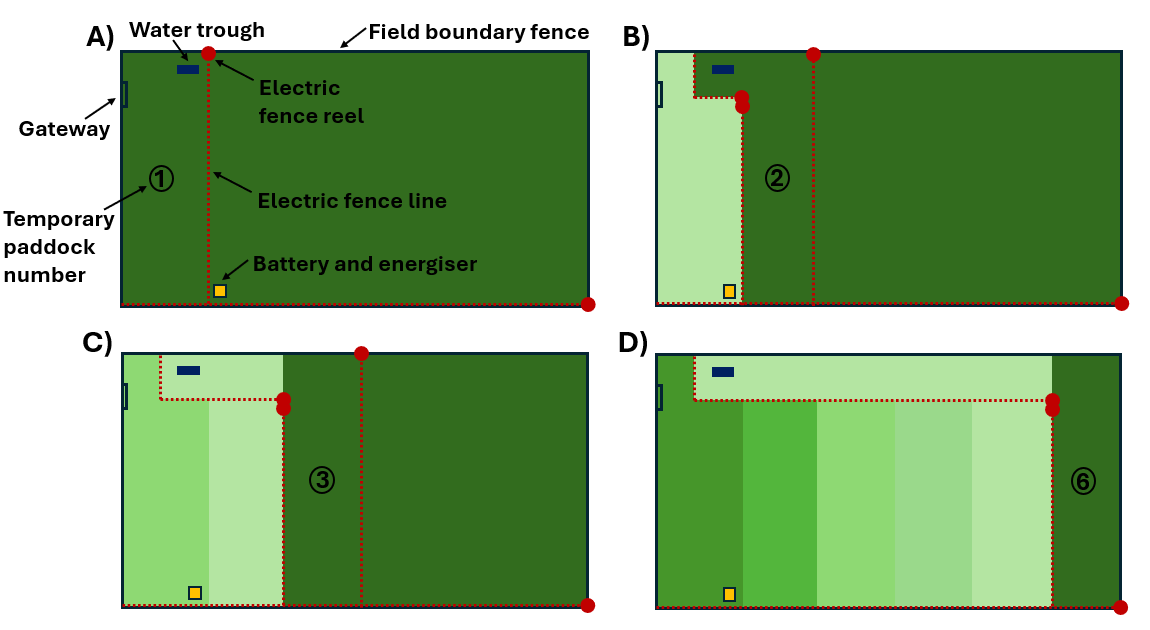
Figure 2: An example division of a typical field into smaller paddocks with temporary electric fence. A single strand of electric fence can be run along one side of the boundary stock fence, using insulators drilled into the fence posts, allowing a live wire for the interior electric fence line to connect to. With only a single water source, a green lane will need to be formed to access the entire field in multiple paddocks.
